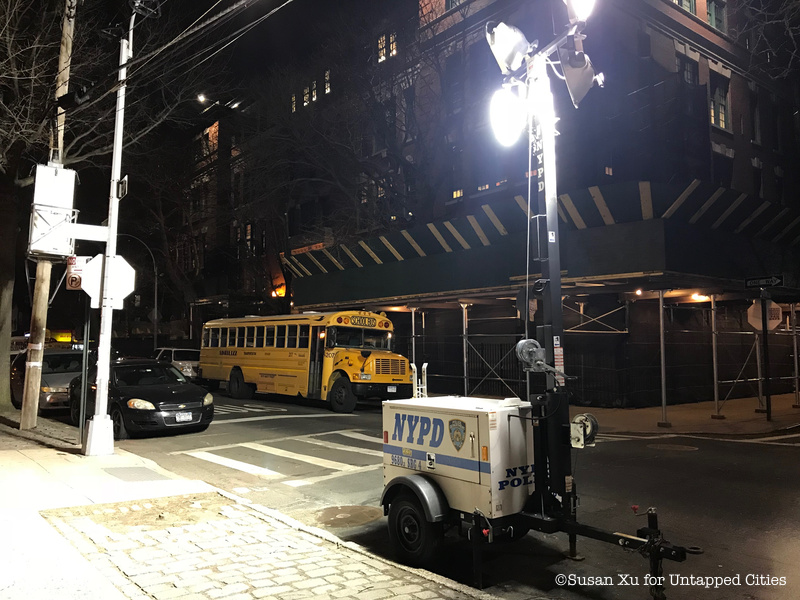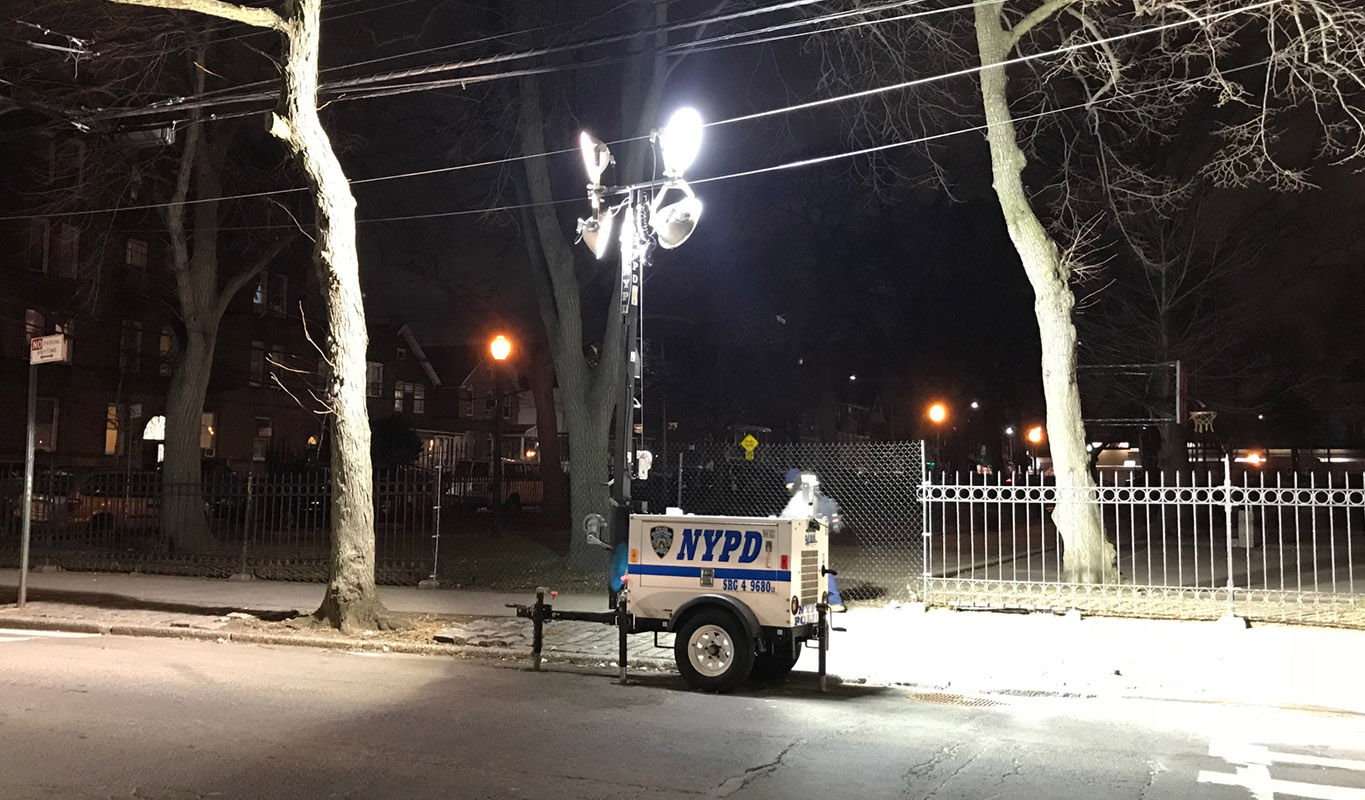In the years since public pressure and a dearth of convincing results more or less ended the heavy-handed policing tactic known as stop-and-frisk, the New York Police Department has quietly rolled out a new means of insinuating itself into communities across the city. The term “omnipresence” first left the lips of Mayor Bill de Blasio in July of 2014, when he announced a plan to tackle a slight uptick in violent crime in the city’s public housing developments. As part of that plan, a total of $210 million was allotted to ratchet up police presence, update and repair infrastructure, and provide budgetary relief to the New York City Housing Authority (NYCHA) going forward. Of that $210 million, a fact sheet accompanying the speech earmarked $1.5 million “for exterior lighting at the 15 developments” responsible for roughly 20% of the crime across the city’s 334 housing projects.
In between bursts of applause, Mayor de Blasio emphasized the importance of shedding light on “obscure and problematic” areas where crime is allowed to flourish. The solution? Install 150 light towers across these fifteen problematic developments, by the rationale that “criminals do not want to engage in wrongdoing in the light,” de Blasio said.
While that may be true, the resultant status quo of housing projects bathed in harsh fluorescent light is hardly a light touch. “It’s overwhelming. The lights shine into people’s rooms, making it hard for them to sleep,” one resident of the Brownsville Houses in Brownsville, Brooklyn told Vice in 2014. The same year, a video report by The New York Times entitled “Omnipresence: New Stop-and-Frisk?” highlighted the uncomfortable parallels between the new cops-on-corners approach and the practice of blanket searches and seizures in minority communities.
Even so, at least two people told Vice that they welcome the changes and feel safer under the glow of the floodlights than they otherwise would at night. The ambivalence of the communities singled out for this new, panopticon-style policing is suggestive of a larger paradox. Namely, that urban, majority minority communities are simultaneously over- and under-policed. As John Jay College of Criminal Justice professor David Kennedy wrote in a 2015 op-ed for the LA Times, “stressed black neighborhoods” in cities across the country are characterized by “very high rates of arrest for minor offenses white folks routinely get away with, and shockingly low arrest rates for serious violent crime.” It’s a dynamic reflected in the 680,000 stops by NYPD in 2011, at the height of stop-and-frisk, and stubbornly high violent crime rates in places like Brownsville compared to more affluent neighborhoods.
In 2016, the de Blasio administration expanded elements of the Omnipresence policing regime to another 25 public housing developments. The move came as part of a study the mayor’s office described as “the first in the country to rigorously examine the effect of different lighting installation strategies on crime reduction.” The study saw 400 units of lighting, including generator-powered light towers, were dispersed across 40 public housing developments for a stated period of six months.

However, a 2017 report by Motherboard found that many of the lights outlasted the study’s six-month run. The report also cast doubt on the foundational assumption that increased street-level lighting reduces crime, citing a 2015 study of 62 British cities that found no “meaningful increase” in violent crimes associated with reduced street lighting. Moreover, the article points out that prolonged night-time exposure to harsh fluorescent lighting can have serious health consequences. University of Connecticut epidemiologist Richard Stevens told Motherboard that the lighting deployed at NYCHA developments would be “just terrible for people. And not only for certain diseases that I’m interested in, but just for your wellbeing.”
The report goes on to cite American Medical Association guidelines warning against the potential harms of outdoor lighting with a color temperature exceeding 3,000 degrees kelvin (K). According to Motherboard, “many of the mobile lights set up in NYCHA housing, including those at the Riis Houses [in the Lower East Side] are 1250-watt Allmand Night-Lite Pro II models, which give off light with a color temperature of 3954K.”
So far, the 2016 study is not among the research and reports publicly available at the Mayor’s Office of Criminal Justice website. The Office of Criminal Justice does state that more than 170 light towers have been installed across 15 NYCHA developments since 2014, but makes no mention of how many are currently in place. As recently as December of last year, however, NYPD light towers were thrumming away in locations decidedly not under NYCHA purview, including Washington Square Park in Greenwich Village. Unlike a number of the city’s parks and housing projects then, the future—and present— status of Omnipresence remains partially in shadow.
Untapped Cities has reached out to the Mayor’s Office of Criminal Justice and the NYPD for comment and will update this article if we hear back.
Like this article? Next check out The Top 10 Secrets of the NYPD and Bill de Blasio Breaking Ground for the LES Ferry Landing. Get in touch with the author @jonahinserra






